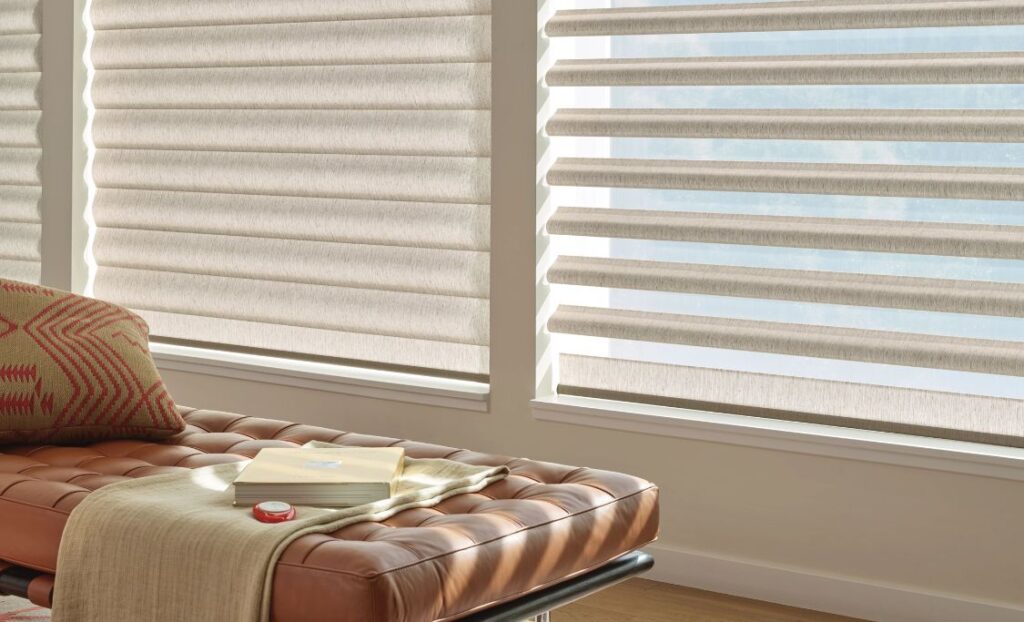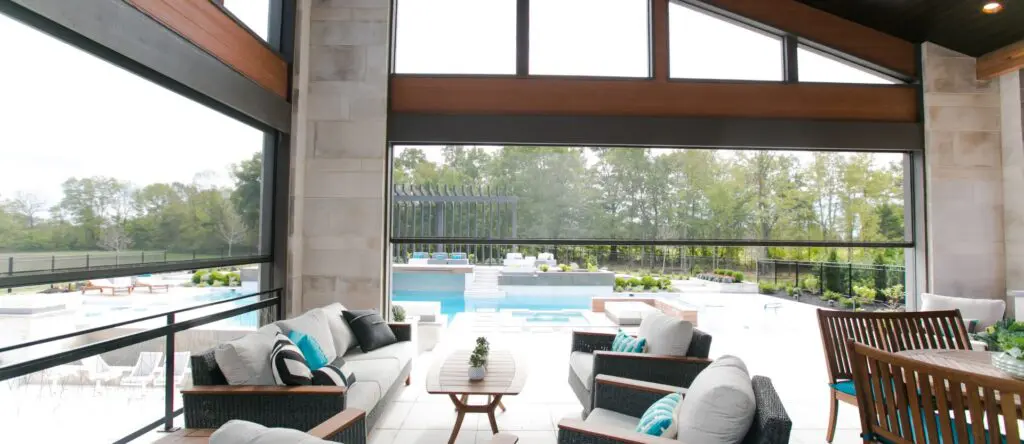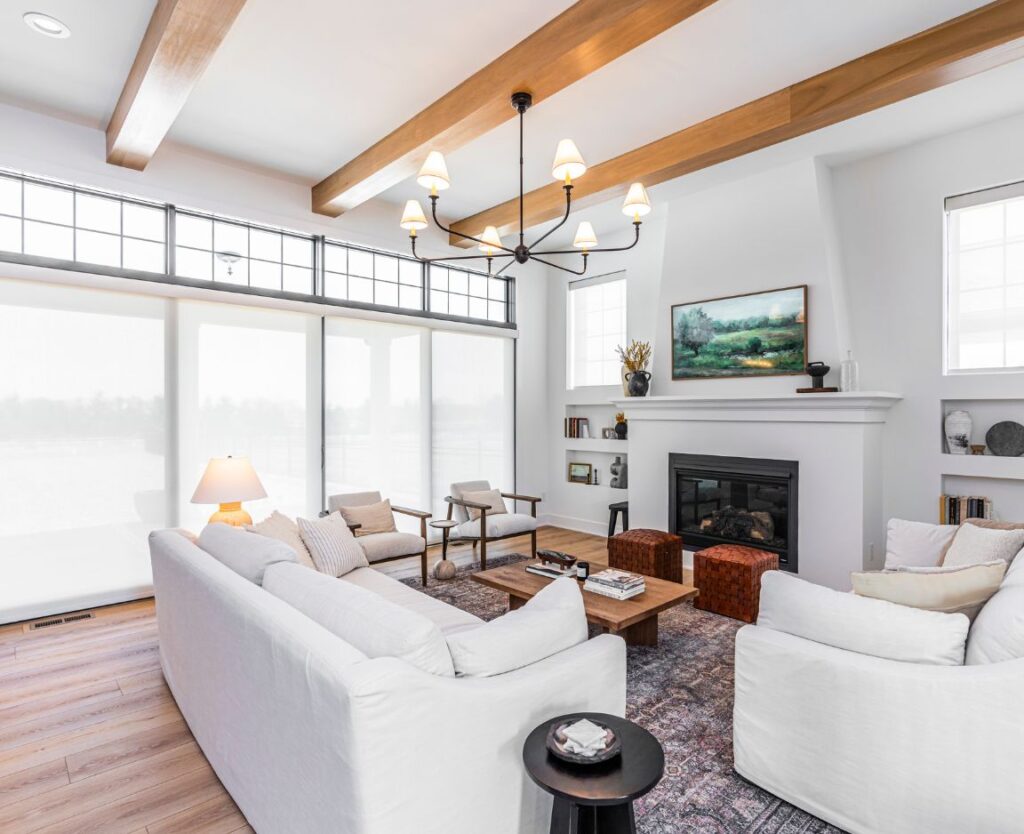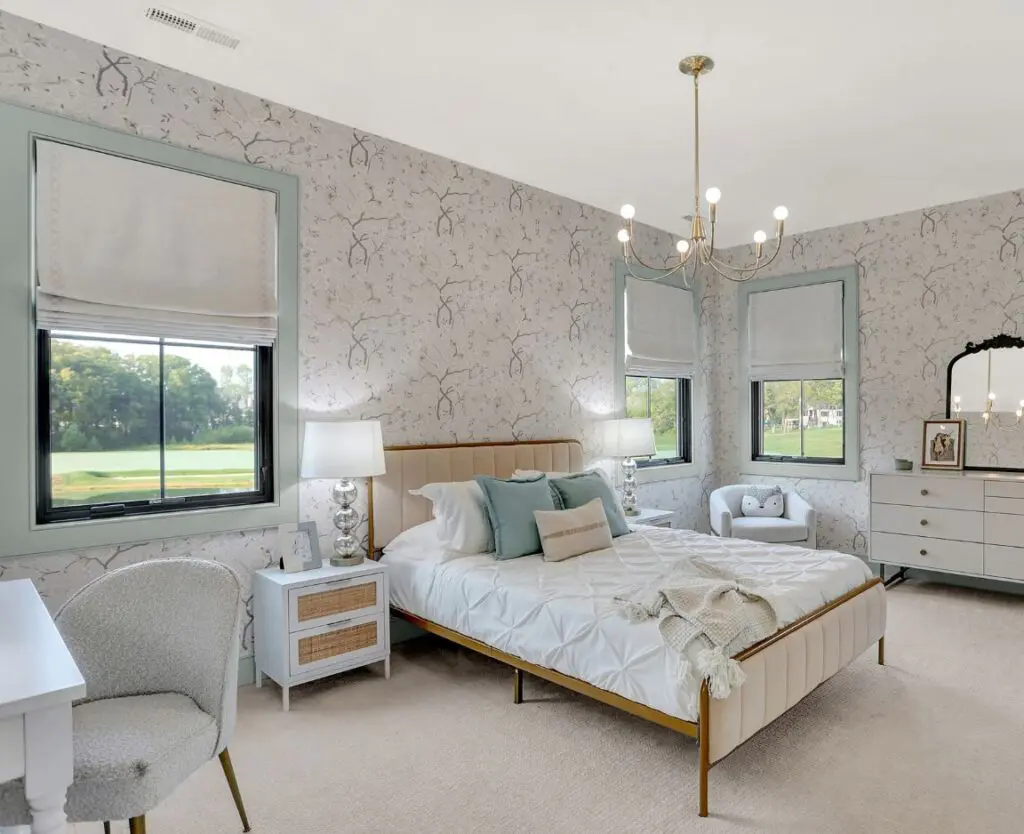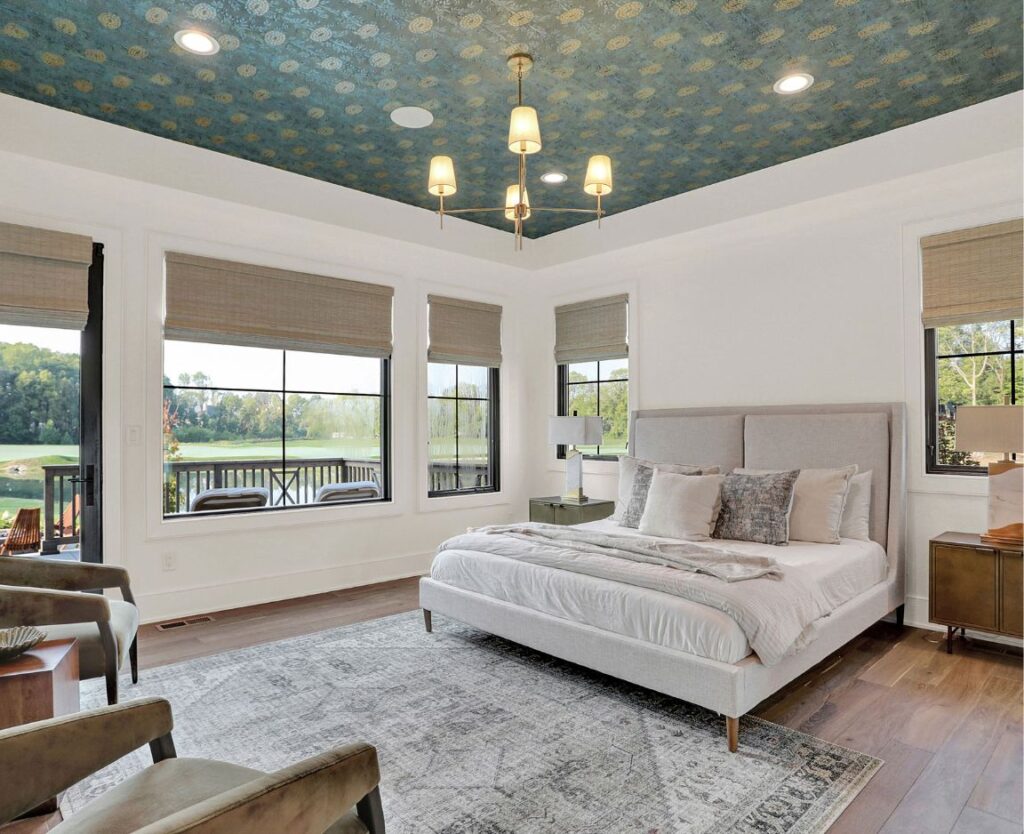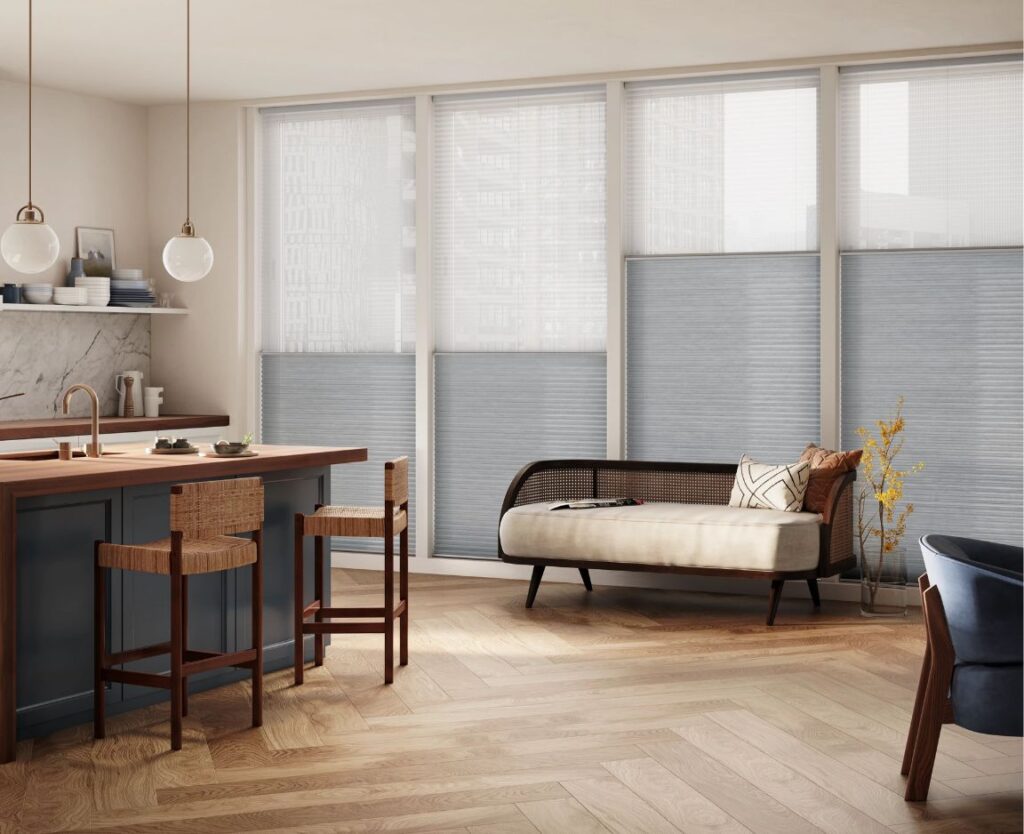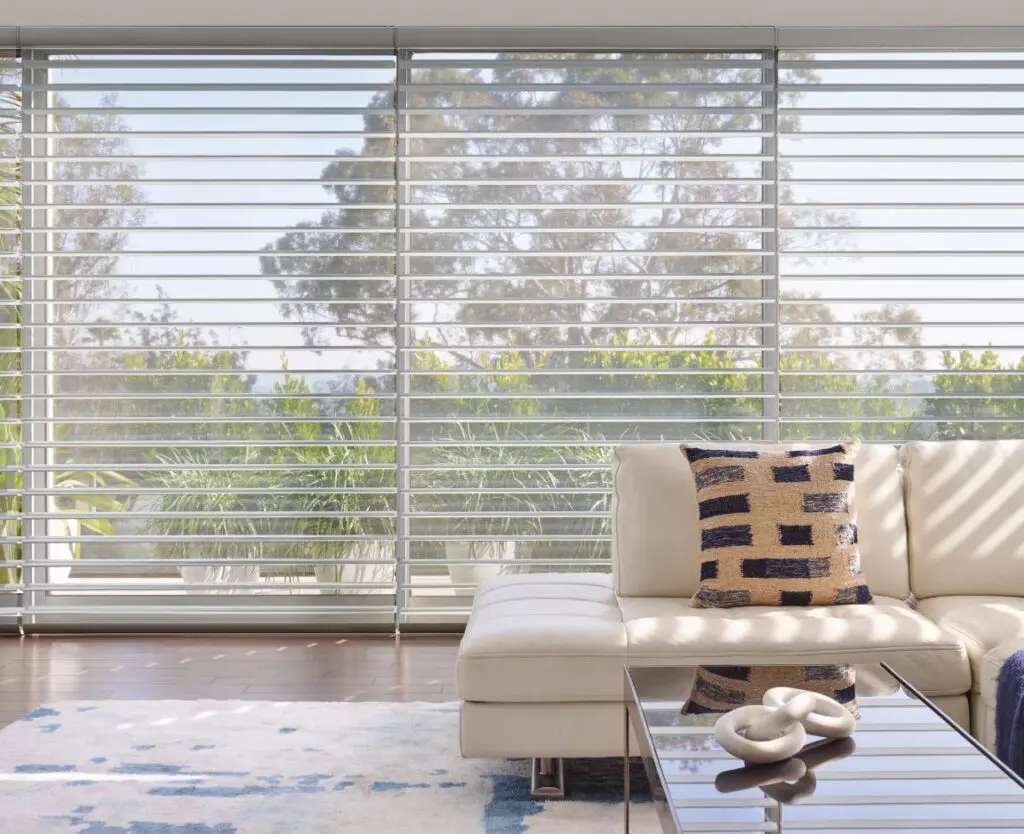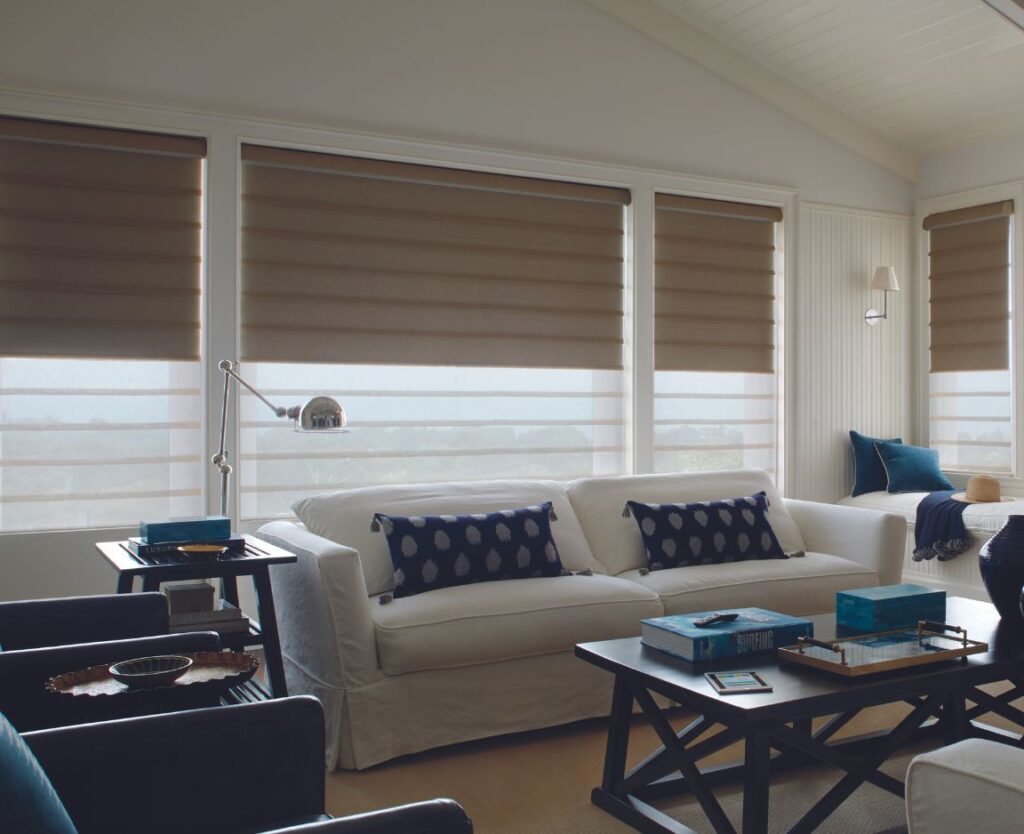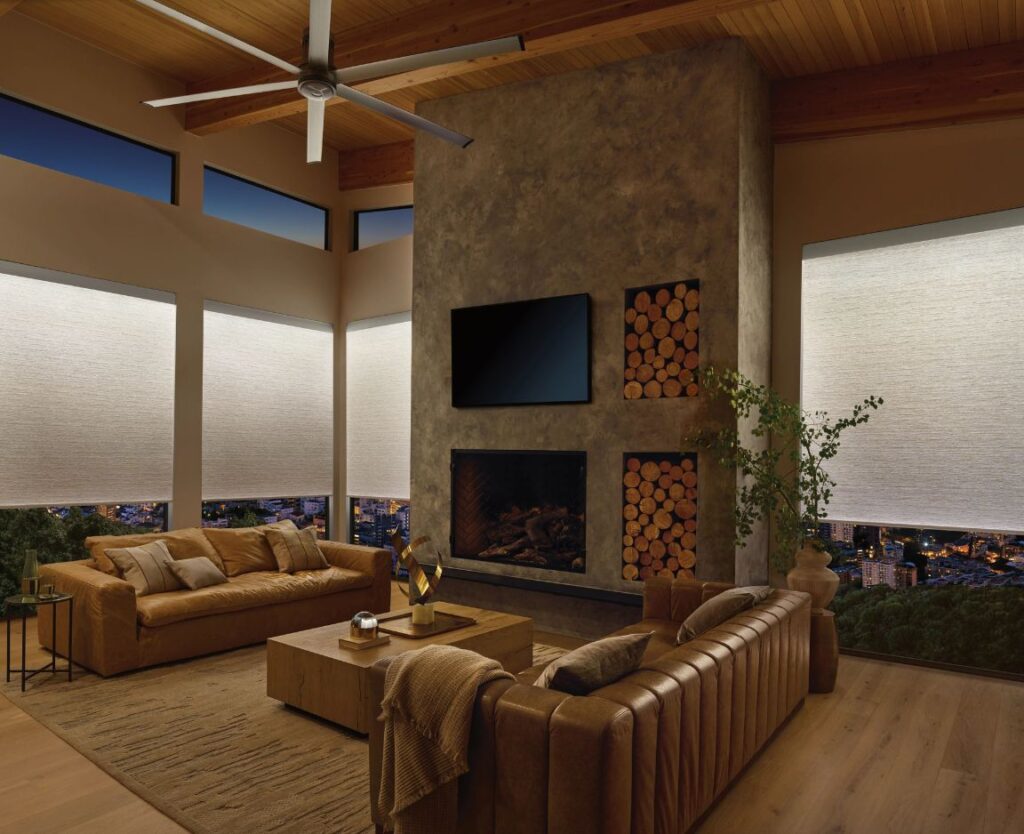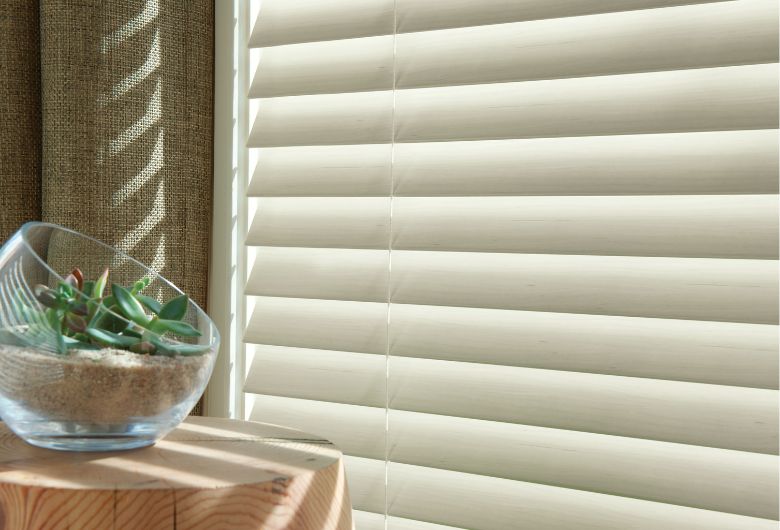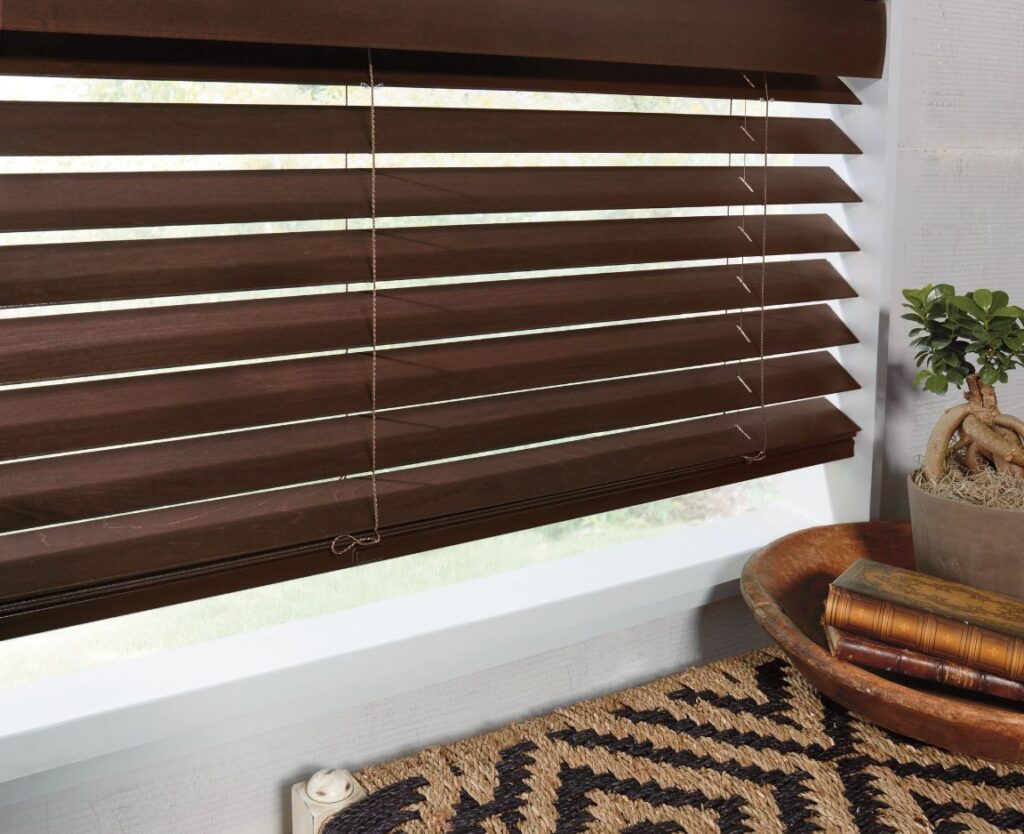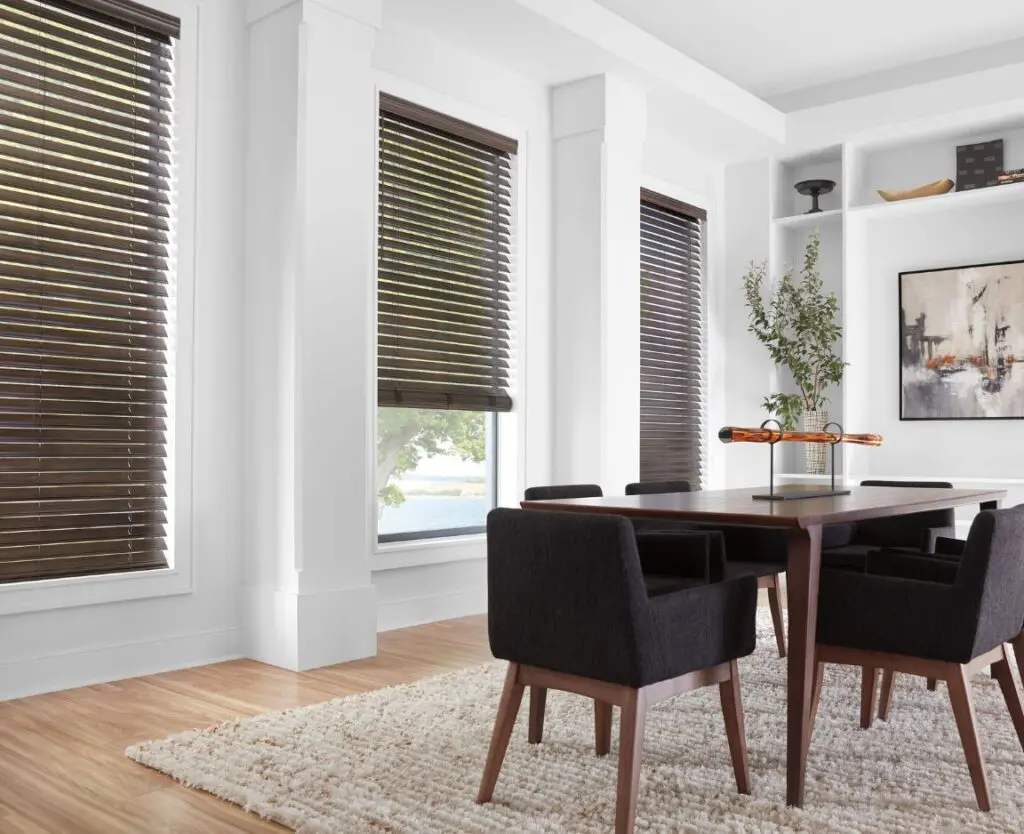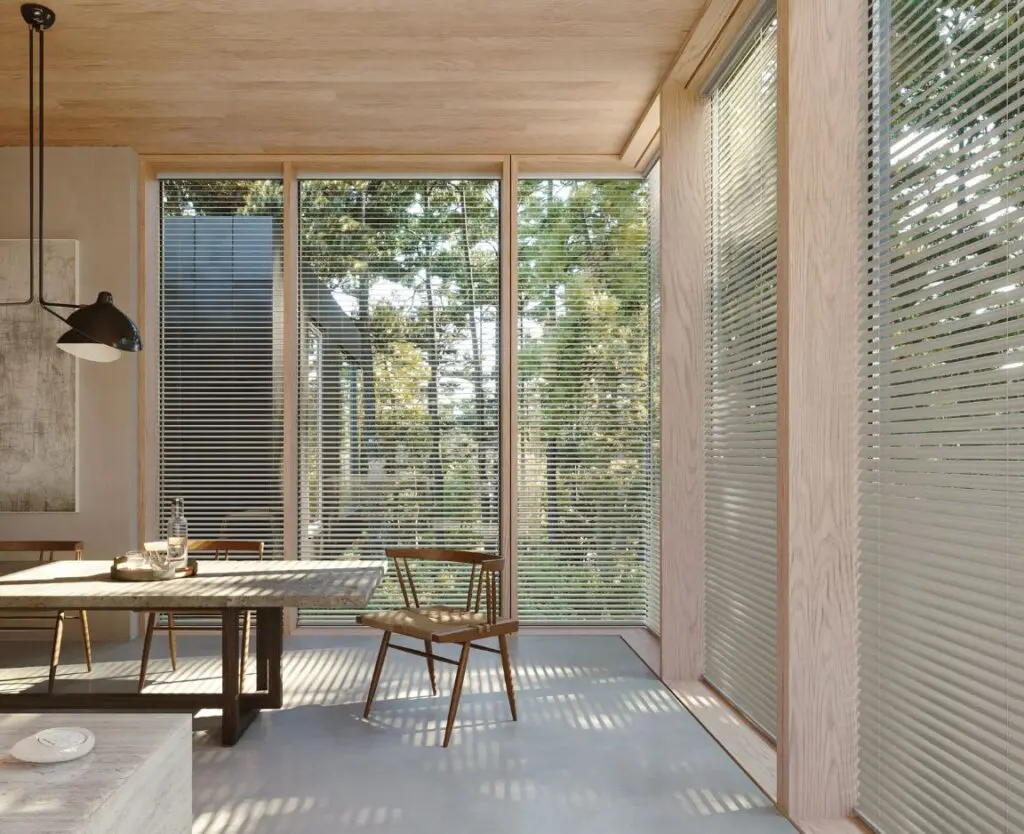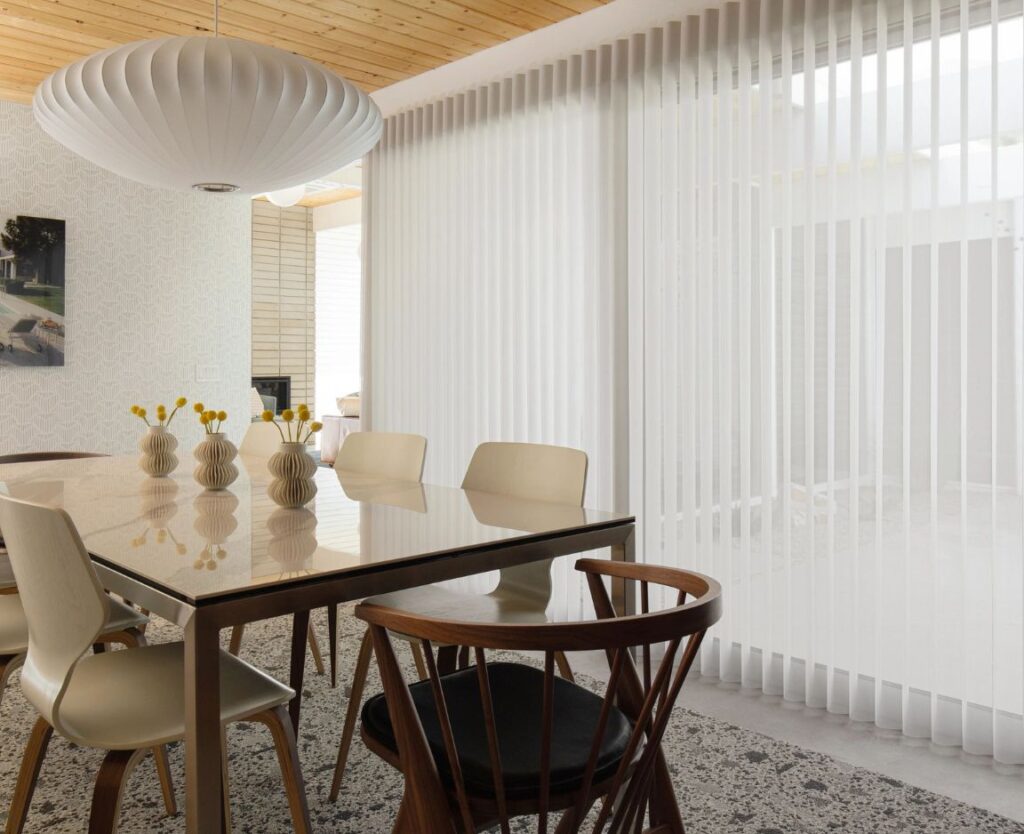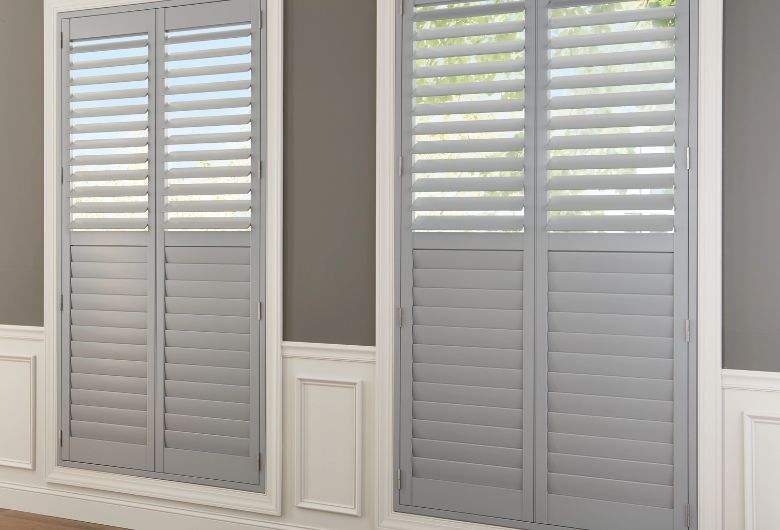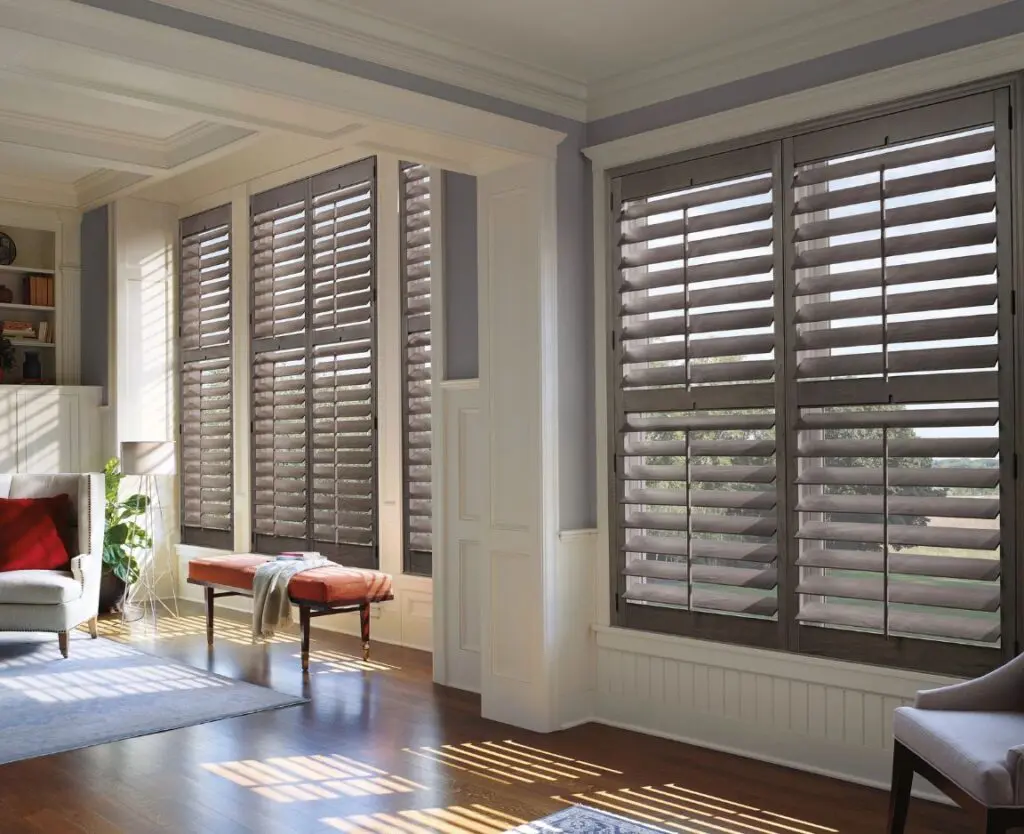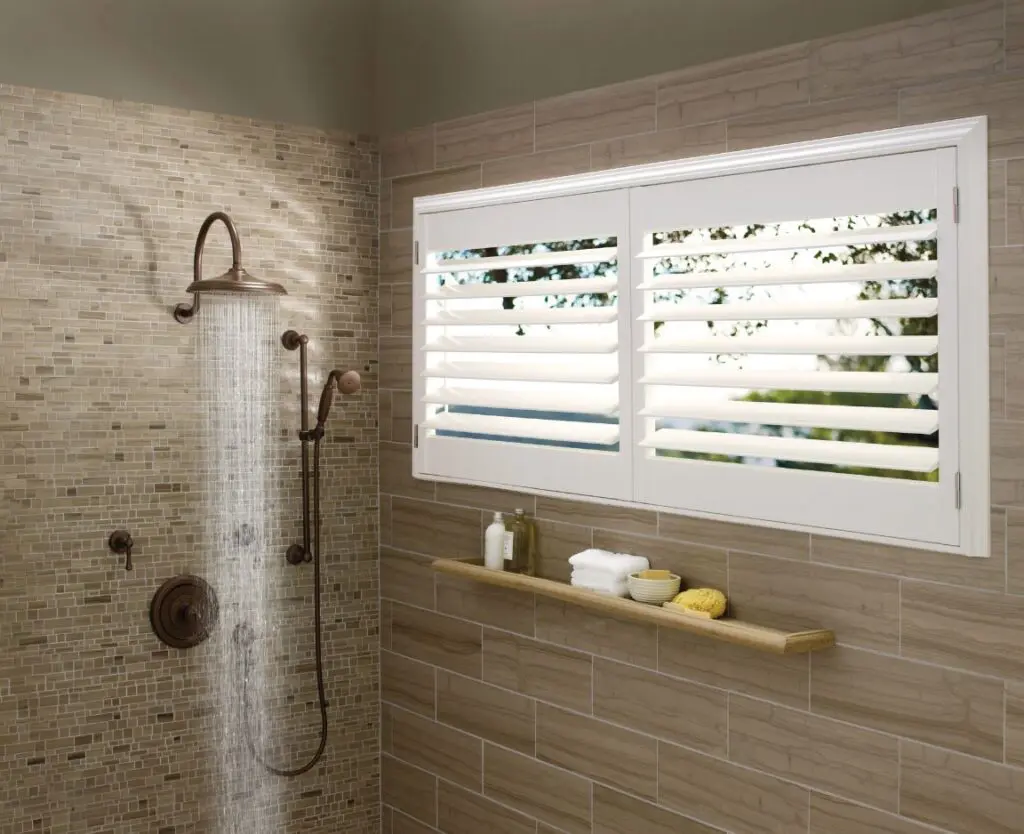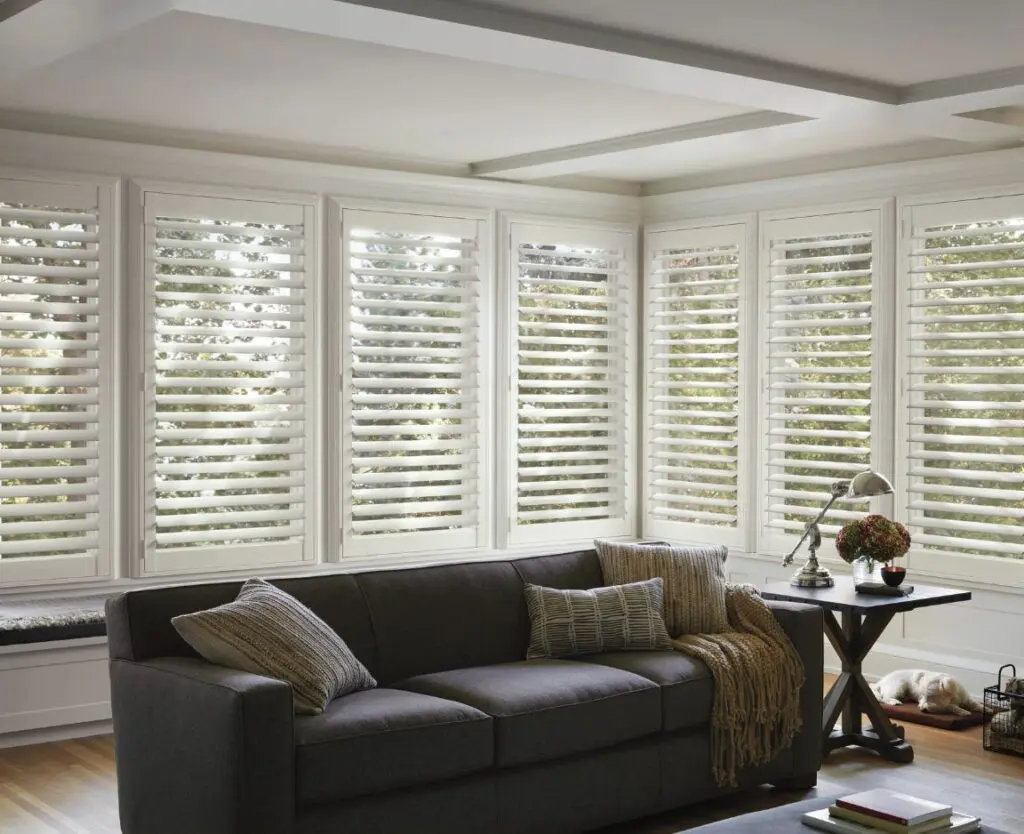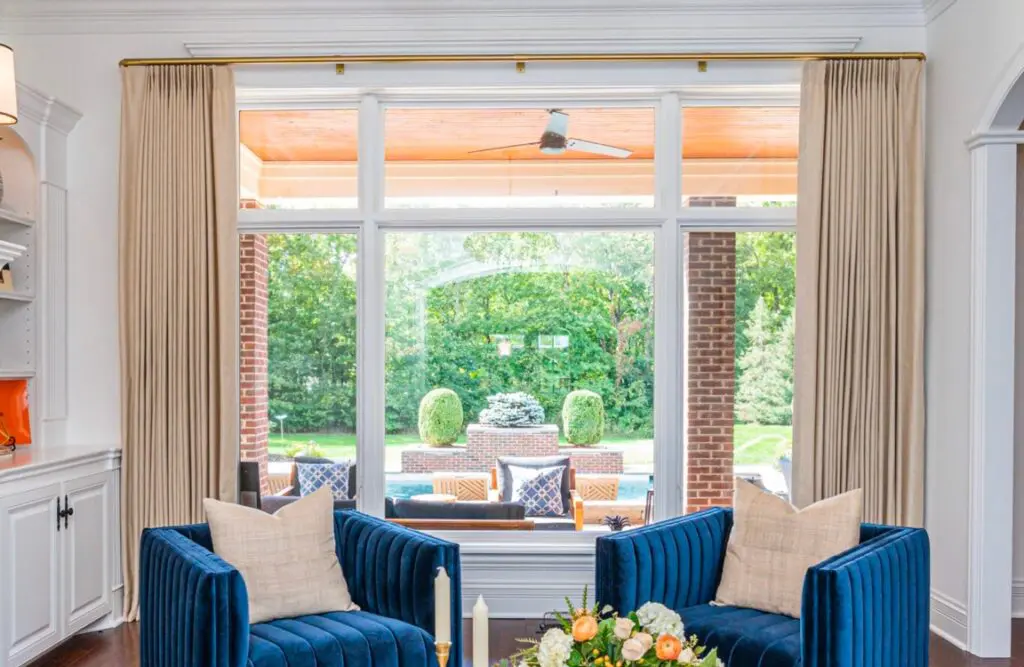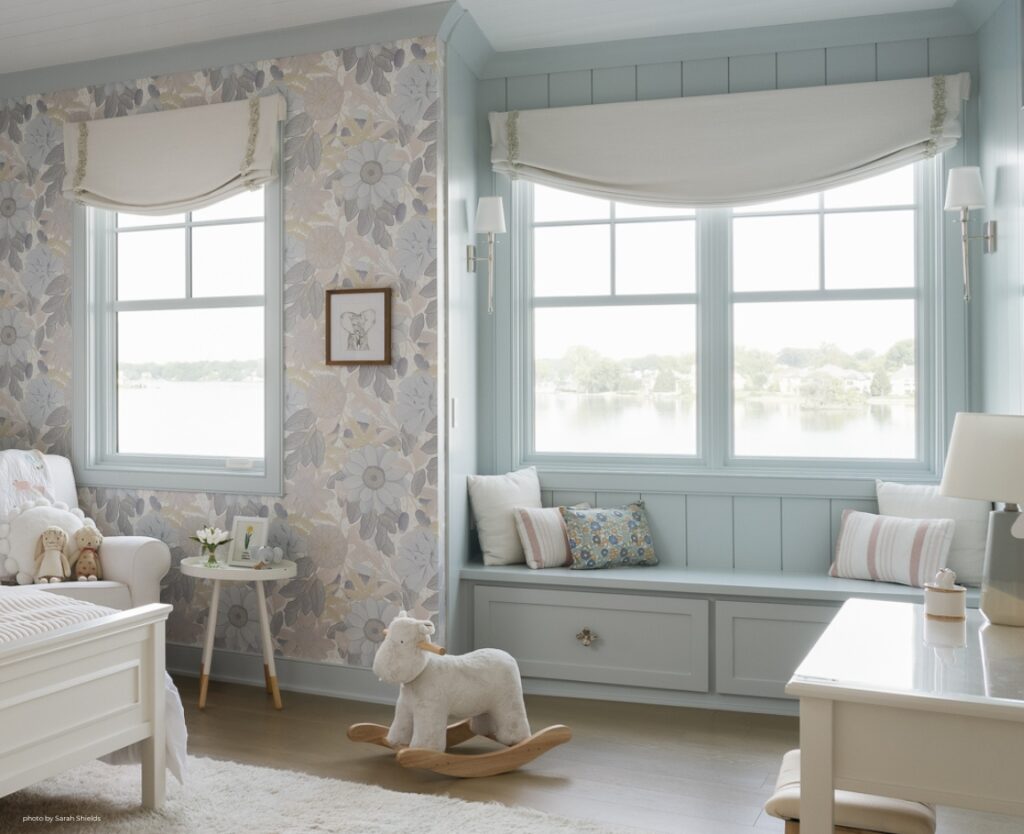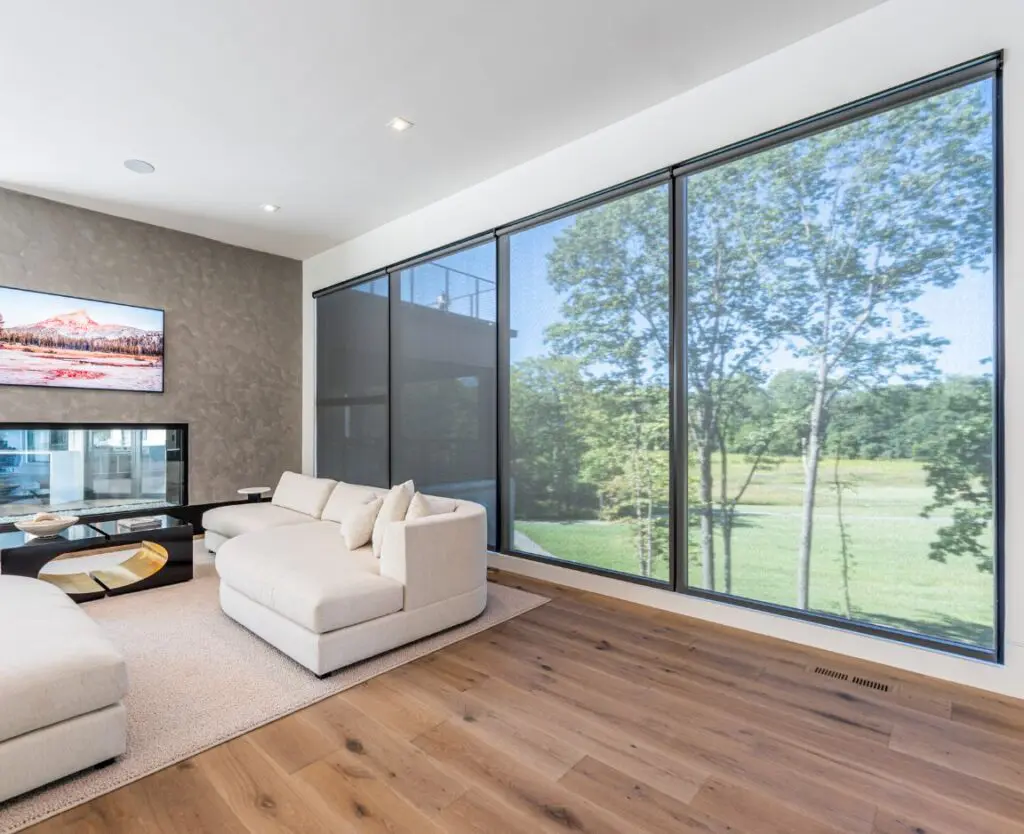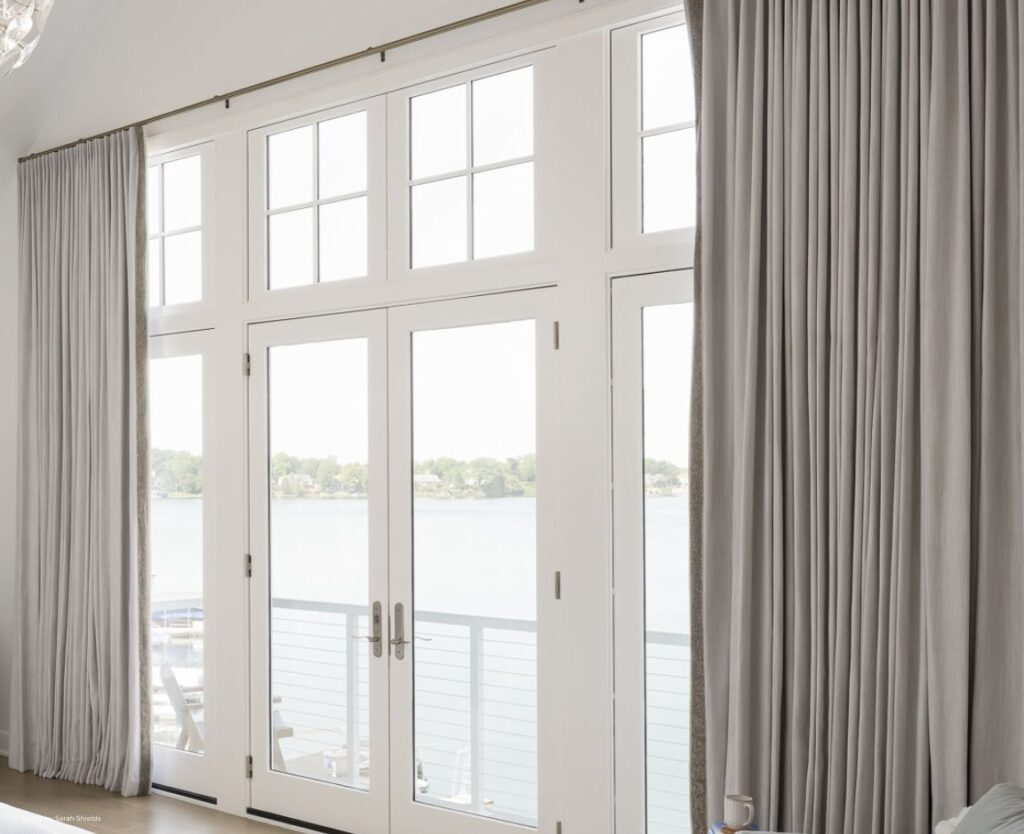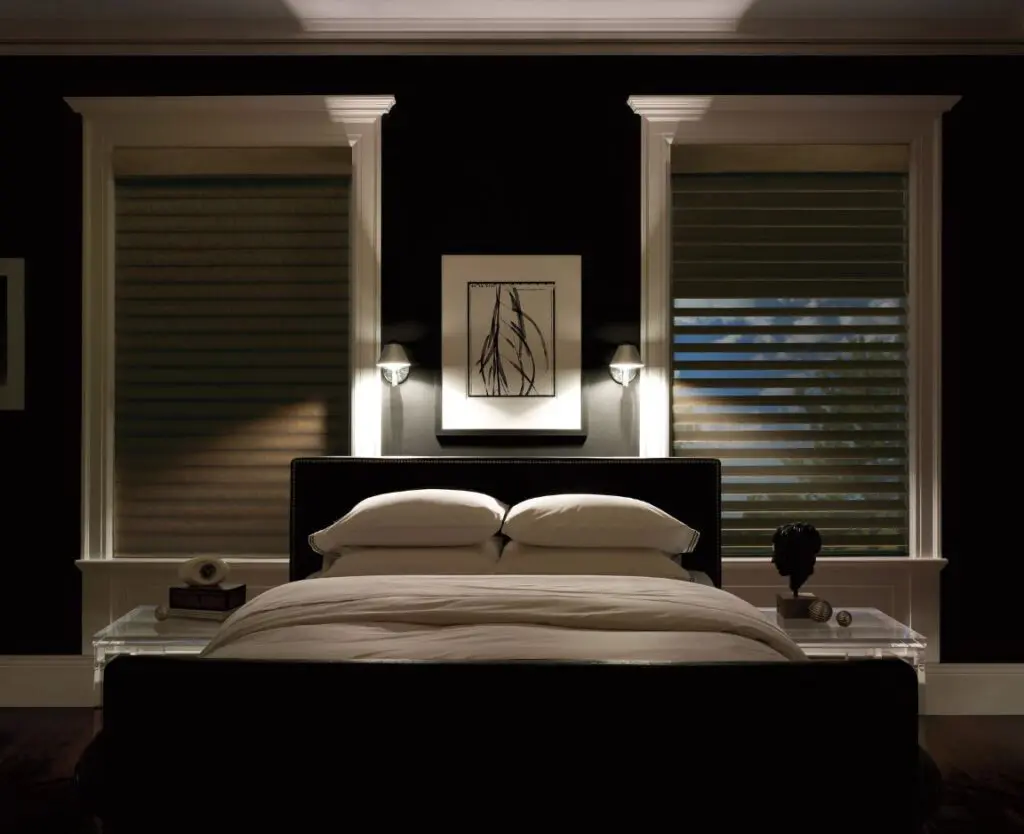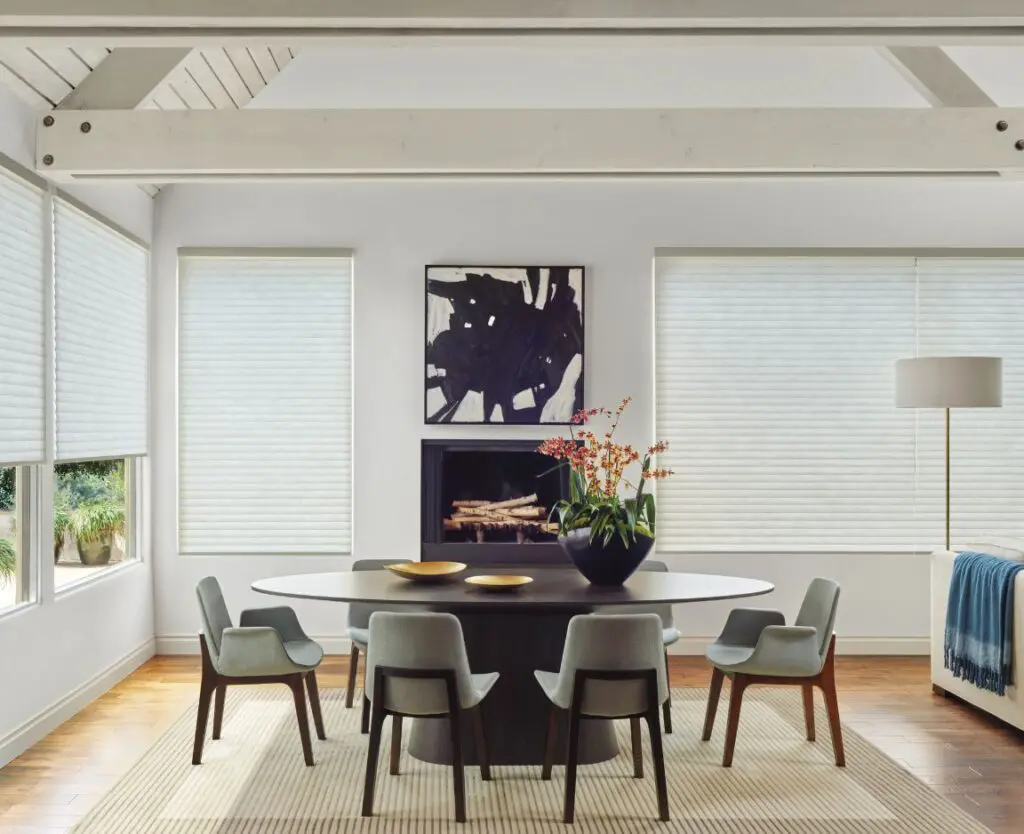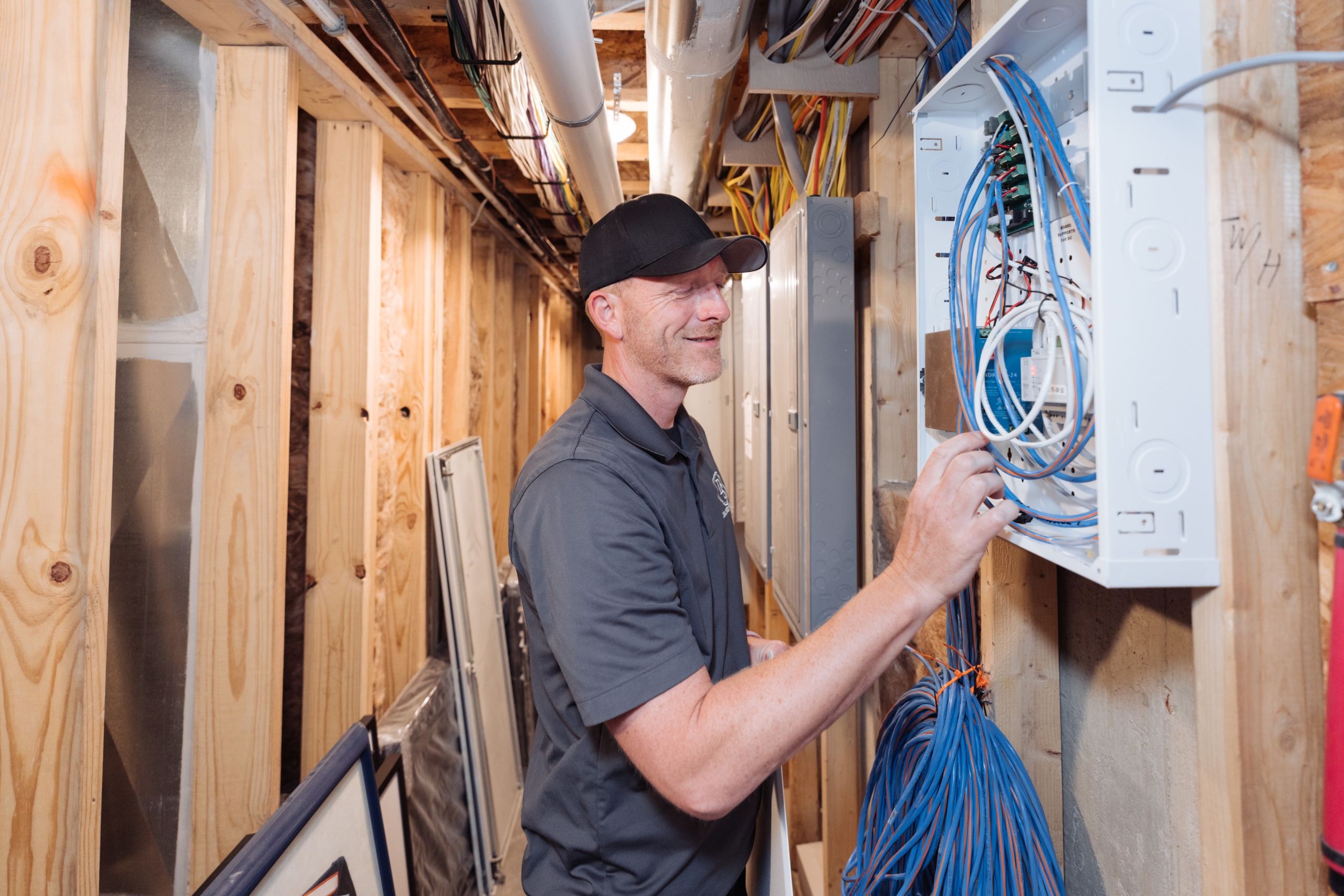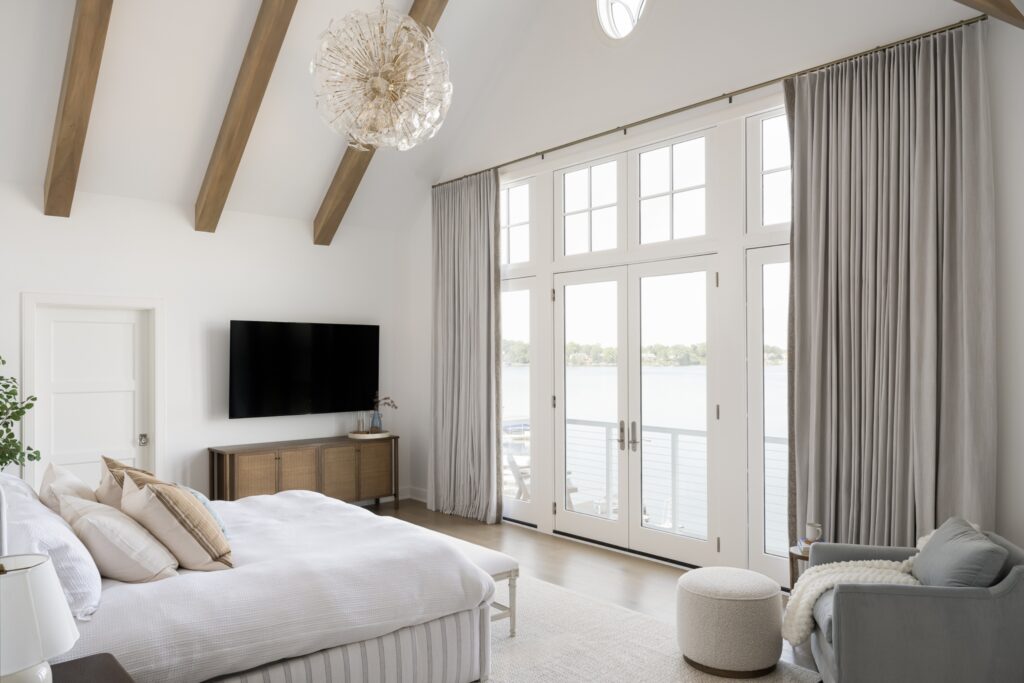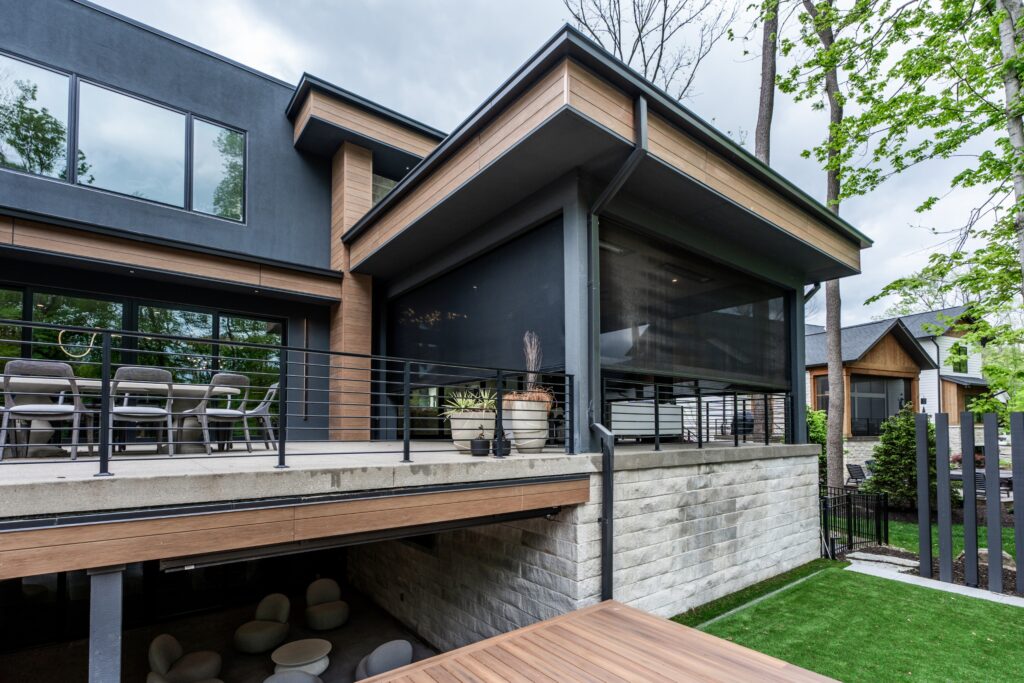Planning for window treatments is often overlooked in the build process, even though they are used daily and significantly impact the look, functionality, and enjoyment of a home.
Don’t make this common mistake! You don’t want to move into your gorgeous new home only to find that the great room is uncomfortably hot from the afternoon sun or your bedroom is lit up at night from a nearby streetlamp. Plan early, in the design phase of your build, to ensure you achieve results you’ll love for years to come. This is especially crucial if you want to automate or recess your window treatments.

Plan Early
If you want automated window treatments, we recommend a prewiring consult before outlets go in and drywall goes up. You only get one opportunity to pre-wire. You can add battery-operated treatments once your build is complete, but hardwired treatments allow for a low-profile installation as no battery packs are required. And you’ll never have to worry about changing batteries!
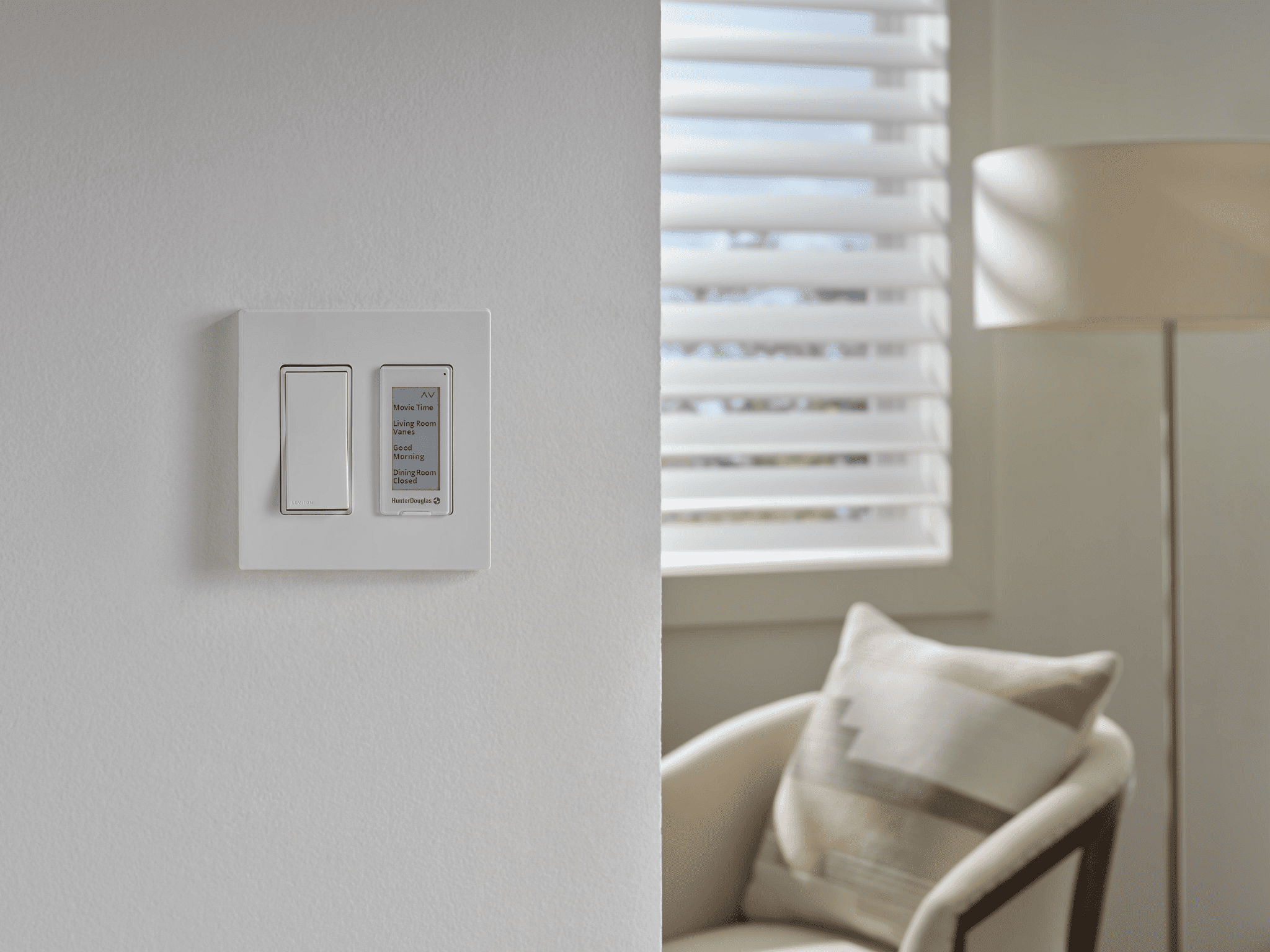

Recessing treatments allows your shades to virtually disappear when they aren’t needed, achieving a clean, streamlined look. In order to recess shades you’ll want to schedule a window treatment consultation while your build is still in the blueprint phase. This allows your designer to work with your architect or builder to ensure the pocket sizes can accommodate recessed treatments.
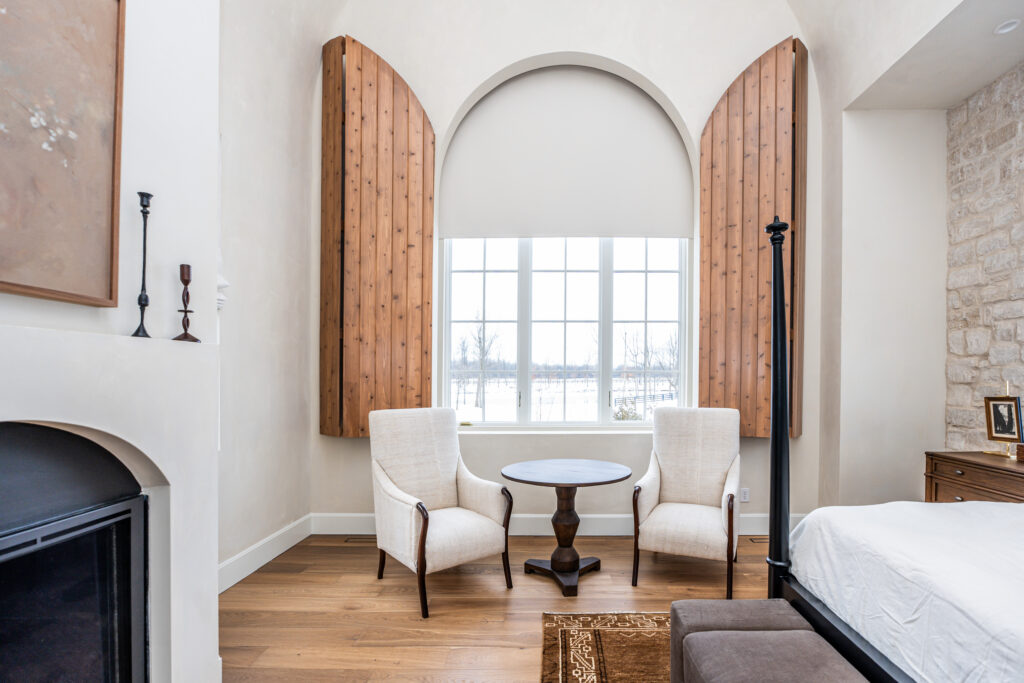
The cost of a shade does not vary between wired and non-wired but you will want to plan for fees associated with the cost of wires and power. This cost is offset later by what you’ll save on battery replacements. A modest increase in construction costs may add to your initial budget, but if you do not plan ahead and want hardwired or recessed treatments later, you’ll be looking at a costly and disruptive renovation.
Avoid Common Mistakes
When pre-wiring and designing treatments for a new build home, it’s important to work with an experienced window treatment professional to avoid these common mistakes:
- Putting wires & power in the wrong places
- Not coordinating the headbox with the window trim
- Taking a “one-size-fits-all” approach & using the same type of treatment, like roller shades, in every room
- Putting blackout shades where they aren’t needed, like bathrooms & closets
- Not taking into account the streetside view of the home— traditional all-white roller shades can ruin the aesthetic of a home’s exterior!
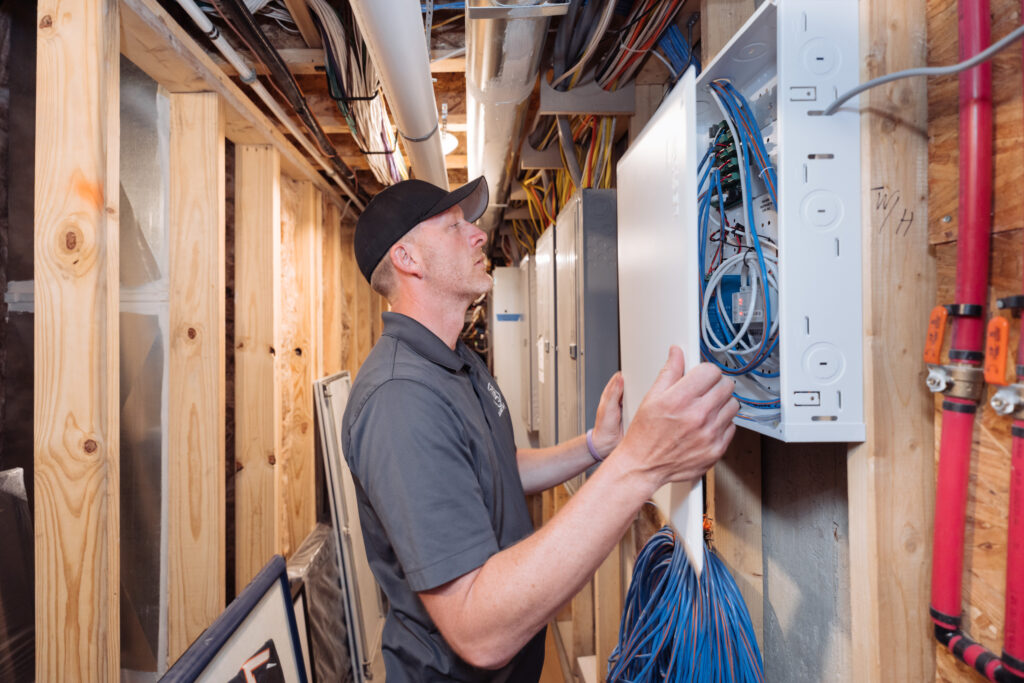
Work With The Experts
Drapery Street specializes in new build projects. We can motorize any type of window treatment including drapes, shades, shutters, and blinds. By working alongside your construction team, Drapery Street will ensure all of your treatments are flawless by move-in day. We focus on the details such as:
- Correct pocket sizes for recessed treatments
- Wiring & outlets in the appropriate spots to completely hide electrical power
- Wire spaces with proper voltage to accommodate window treatment specifications
- Location of wall switches to operate motorized shades
- Integration with your home automation system of choice
- Selecting the best treatment for every window & door, taking into account the functionality required (room darkening, light filtering, privacy, UV protection) & the aesthetic of the room
- The exterior/streetside view of your home

We manage the process every step of the way through our proven pre-build and integration process, allowing you to relax and know every detail is covered. All you need to do is request an initial consultation.

